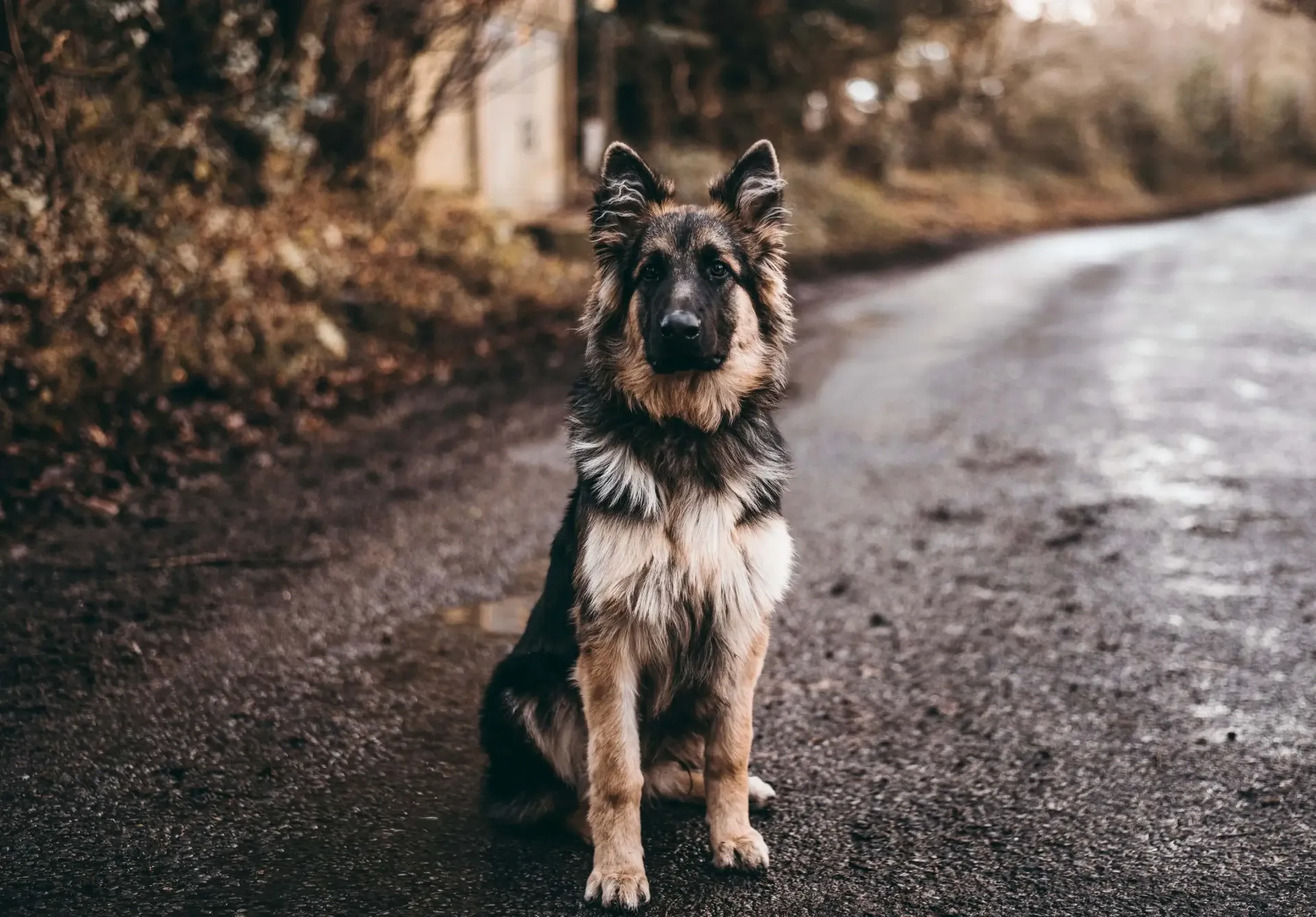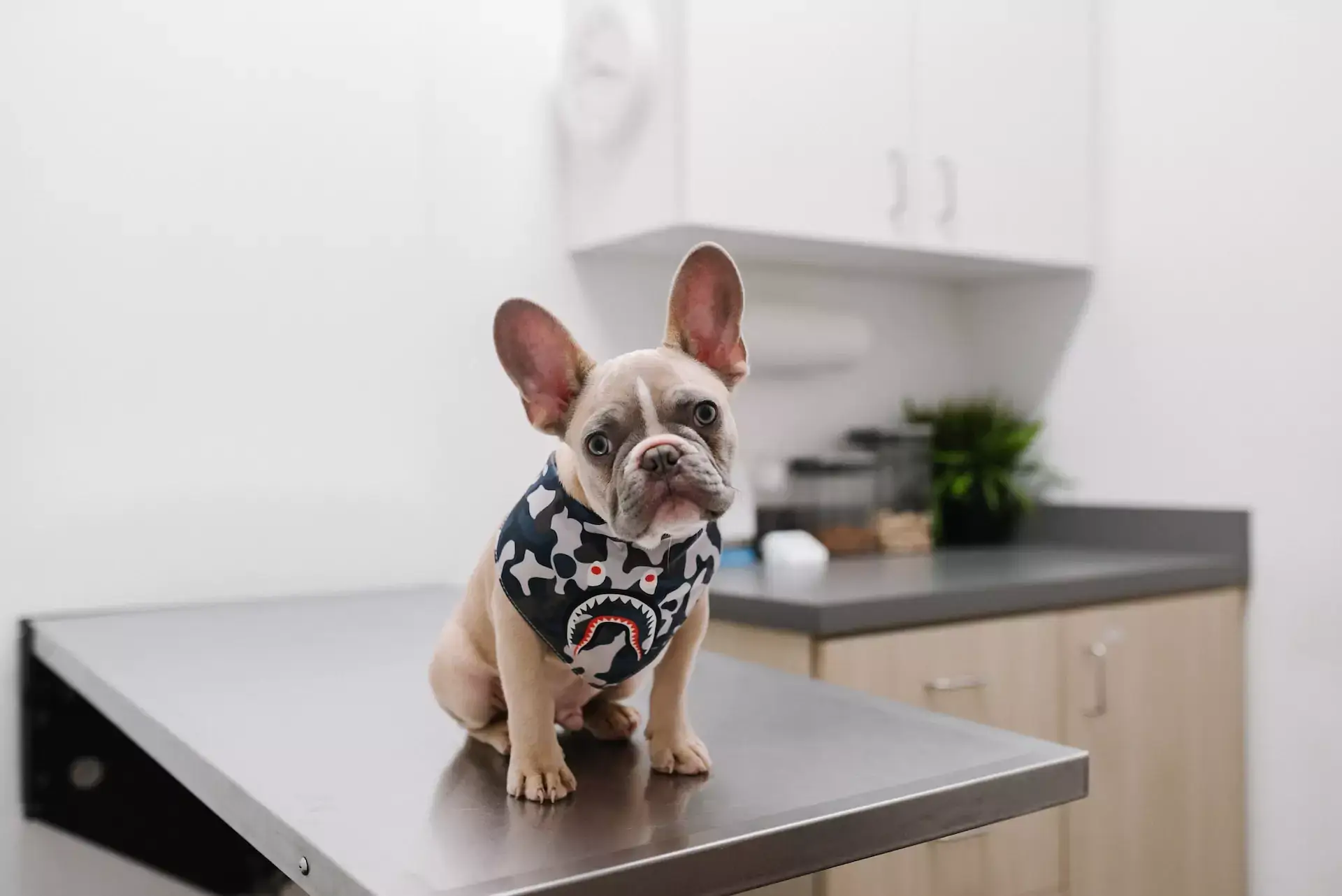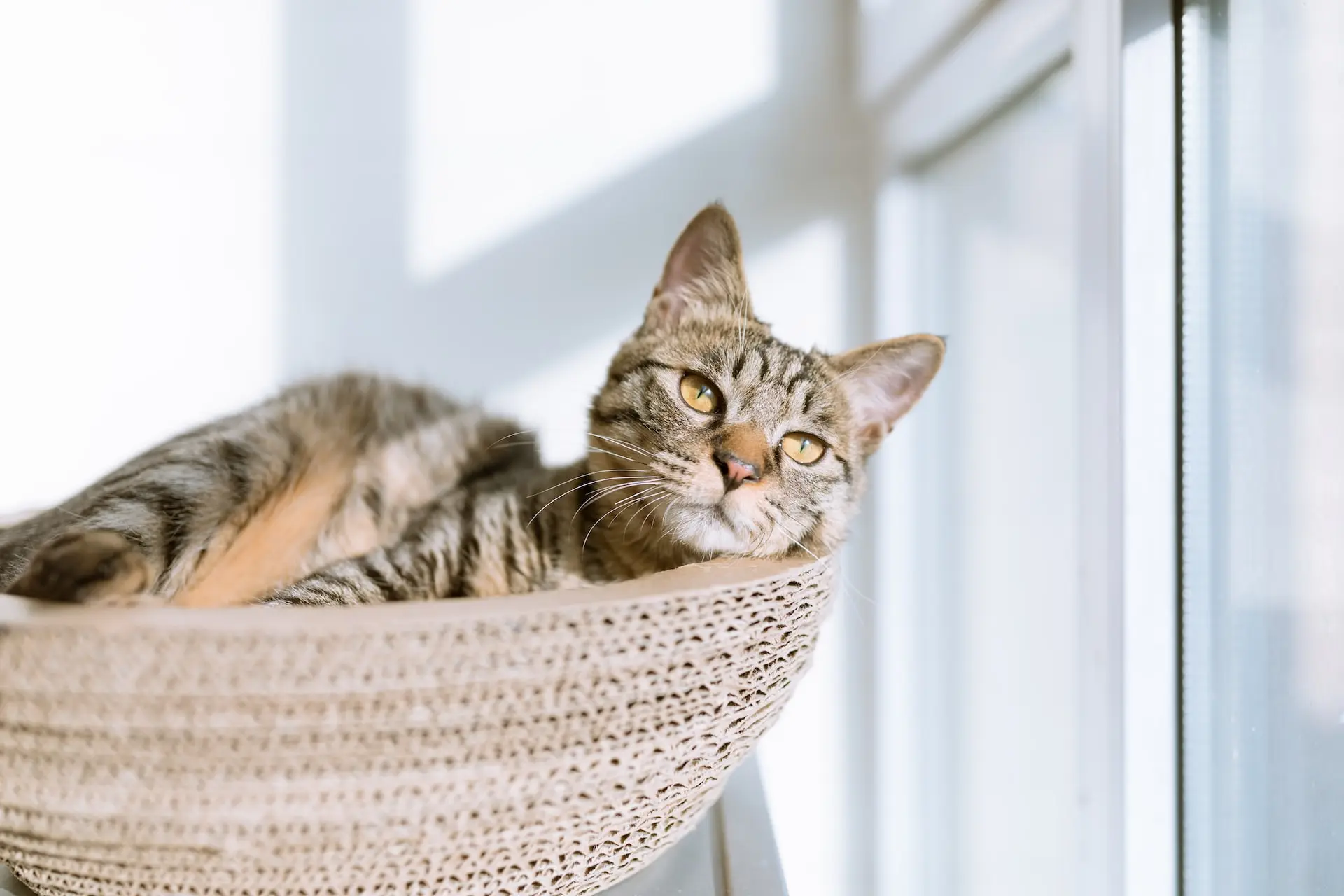Can you believe that it’s 2024 already? One of the first things on our agenda for this year is celebrating a very special dog: the Australian Shepherd. This amazing and intelligent dog pup has his own day to shine: January 9th is Aussie Day! A local veterinarian goes over some basic breed information about this smart, active pup in this article.
Australian Shepherd Dog Breed Basics
Strong, loyal, and extremely intelligent, the Aussie is a working dog through and through. Fido is part of the AKC’s Herding Group, which includes many high-performing working dogs, such as the German Shepherd, Border Collie, and Corgi.
Aussies usually weigh between 40 and 65 pounds when full grown, and can be up to 22 inches high. They live about 12 to 15 years with proper care.
What Color Is The Aussie’s Coat?
Aussies can wear several pretty colors and patterns, including black, red, and merle, which is a pretty dappled or mottled pattern. They may have lighter points or tips.
What Is The Aussie Stare? Is That A Thing?
Aussies are renowned for their stares. In fact, Fido’s gaze can be so intense that it is sometimes called the ‘Aussie death stare.’ This intimidating stare has proven very effective at helping corral cattle. Of course, part of what makes the stare so striking is Fido’s pretty eyes. Many of these dogs have striking pale blue eyes. Native Americans called them “ghost eye dogs” and considered them sacred. That isn’t the only unusual thing about the Aussie’s eyes. Many of them have heterochromia, or different colored eyes. Their eyes can be blue, brown, amber, hazel, or green … or any two. Actually, some Aussies have multiple colors within one eye.
What Temperament Does The Australian Shepherd Have?
Fido is a working dog at heart, and is hardwired for herding work. Your canine buddy may even try to herd you!
Aussies are incredibly smart. In fact, they often make the list of the most intelligent dogs. They are very active, and need lots of exercise and stimulation. This is not the dog for someone who wants a calm couch potato for a pet. These hardworking pups are friendly but protective, and are very driven to please their humans. They also just enjoy spending time with their owners, though they prefer to be doing something active. Fido absolutely loves going for walks with his humans. Once he’s fully grown, he also makes a good jogging buddy.
What Are The Aussie Shepherd’s Grooming Needs?
Aussies have thick coats. They are very pretty dogs, and are quite fluffy. There is a downside to that, though: Fido does shed quite a bit. You’ll need to brush your pooch about once a week, and may need to use a special brush, known as an undercoat rake. Why your pet’s coat gets matted – and how to prevent it is an important issue to be aware of when caring for an Aussie’s thick coat.
The Australian Shepherd is prone to wax buildup, so you’ll need to clean your pet’s ears. Regular nail trims and dental care are also important. You may find it worth your while to take your pooch to a groomer. Ask your vet for specific advice.
Are Australian Shepherds Healthy?
Aussies tend to be healthy and hardy, but they are still prone to illness and injury. We would recommend hip and elbow evaluations, as well as ophthalmologist evaluations. (These recommendations also match the AKC’s breed guidelines.) Regular veterinary wellness exams and pet vaccinations are essential to keep your Aussie healthy throughout their life.
How Energetic Is The Australian Shepherd?
Extremely! Fido is known for being very active, and is always on the go. Because they are so high-energy, they do best in homes with large, fenced yards. These guys also do very well in various doggy sports, such as agility, obedience, dock diving, or flyball.
What Is The Aussie Skilled At?
Herding is of course Fido’s original career, but it’s by no means his only option. Because they are so smart and devoted, Aussies also excel in many modern fields. They can be found working as Seeing Eye dogs, hearing dogs, drug-sniffing dogs, and search and rescue dogs. (Of course, they can also make great family pets!)
Training For The Australian Shepherd
Proper training and socialization are particularly crucial for active, high-energy pups like the Aussie.
Fido gets very attached to his humans, but he can be territorial and possessive. He also can get destructive if he gets bored or lonely. Sadly, when Aussies are rehomed, it is often because of “misbehavior.” This is actually usually due to either a lack of exercise, a lack of training, or both.
Plot Twist: The Australian Shepherd Isn’t Australian
The Aussie was officially recognized by the AKC in 1991, but his story starts long before that.
Many dog breeds were named after the region they originated in. There are numerous examples of this, such as the German Shepherd, Labrador Retriever, and Bouvier des Flandres, who has his own special day on the 16th. One would probably assume that the Australian Shepherd is from Australia, right?
Nope.
Fido is actually an American dog. He first bounded onto the scene as a herding dog. He was particularly skilled at herding sheep, and quickly became popular in Western states, such as Colorado, California, and Wyoming. (Note: to be fair, the Australian Shepherd isn’t only known by that name. He’s also been called the Spanish Shepherd, Pastor Dog, Bob-Tail, New Mexican Shepherd, and California Shepherd.
The Aussie’s history starts with the Conquistadors who came to the New World in the 1500’s. They brought sheep as a source of food and wool. (Fun fact: many of those sheep were Merinos, a breed whose wool was so valued that taking them out of Spain was punishable by death.)
Down the road, they were joined by settlers from Basque, a region between France and Spain. Meanwhile in Germany, shepherds there were crossing their own sheep with the Merino. Those lambs were soon brought to the U.S., along with sheep dogs to guard and herd them. Those dogs are described as yellow, black, or tan pooches with a wolf-like appearance. They were mixed with other dogs, such as the Collie. The rest, as they say, is history.
How Did Aussies Become Popular?
Aussies quickly became favorites of ranchers and cowboys, but it took time for him to become popular outside that world. Rodeo star Jay Lister is credited with the Aussie’s rise to popularity. Back in the 1900’s, Lister brought his Aussie on the rodeo circuit. The pup’s capacity for performing tricks captivated crowds and later, opened the doors for his popularity as a pet.
Why Do Aussies Have Short Tails?
Another interesting thing about Fido? He doesn’t always have much of a tail to wag. About one in five Aussies are born with short tails. Some have no tails at all. This isn’t a coincidence: ranchers selected the pups with this abnormality for breeding, because it was safer for the pups doing herding work.
Do Aussies Make Good Pets?
The Aussie is an extraordinary dog. He’s not only extremely smart, he’s also super cute. And super active. This high-energy pooch needs lots of toys, playtime, and exercise. Do plenty of research before adopting any dog. Adoption is a lifetime promise, so it’s important to choose the pet that’s right for your family!
Our Advice on Meet The Australian Shepherd in 2024
What is the average litter size for Australian Shepherds, and how often do they typically go into heat?
Australian Shepherds typically have an average litter size of 6-7 puppies. Female Aussies usually go into heat twice a year, approximately every six months. The heat cycle can vary slightly depending on the individual dog, with each cycle lasting about 2-3 weeks. During this time, it’s essential to monitor the dog closely if breeding is not desired, as they can be quite fertile. Regular veterinary check-ups and appropriate care are important to ensure the health and well-being of both the mother and her puppies.
Are there any specific dietary requirements or recommendations for Australian Shepherds?
Australian Shepherds require a high-quality diet rich in protein to support their active lifestyle and maintain their muscular build. It’s important to choose dog food with real meat as the primary ingredient, along with a balanced mix of fruits, vegetables, and grains for essential vitamins and minerals. Avoid foods with artificial additives and fillers. Because Aussies are prone to hip and elbow issues, incorporating supplements like glucosamine and chondroitin can be beneficial. Regular feeding schedules and portion control help maintain a healthy weight, reducing the risk of obesity-related health problems.
How do Australian Shepherds typically interact with other dogs and pets in the household?
Australian Shepherds are generally friendly and social with other dogs and pets in the household, thanks to their herding instincts and high intelligence. Early socialization and proper training are crucial to ensure positive interactions. They may exhibit herding behaviors, such as nudging or circling, which can sometimes be mistaken for aggression. Aussies thrive in environments where they receive plenty of mental and physical stimulation. Supervised introductions and consistent reinforcement of good behavior help foster harmonious relationships between Australian Shepherds and other pets.
What are some common health issues that Australian Shepherds may face as they age?
As Australian Shepherds age, they may face several common health issues. Hip and elbow dysplasia are prevalent, potentially leading to arthritis and mobility problems. Eye conditions, such as cataracts and progressive retinal atrophy, are also common and can affect vision. Aussies may develop epilepsy, leading to seizures. Regular veterinary check-ups, including hip, elbow, and ophthalmologist evaluations, are crucial for early detection and management of these conditions. Maintaining a healthy diet, regular exercise, and weight management can help mitigate some health risks and improve the quality of life for aging Australian Shepherds.
Are there any specific grooming tools or techniques that work best for maintaining the Australian Shepherd’s thick coat?
Maintaining an Australian Shepherd’s thick coat requires specific grooming tools and techniques. Regular brushing with an undercoat rake is essential to manage shedding and prevent matting. A slicker brush can help remove loose hair and keep the coat smooth. Weekly brushing is typically sufficient, but more frequent grooming may be necessary during shedding seasons. Bathing should be done as needed, using a dog-specific shampoo. Additionally, ear cleaning, nail trimming, and dental care are important aspects of grooming to keep the dog healthy and comfortable. Consulting a professional groomer can provide tailored advice and assistance.
Do you have questions about caring for an Aussie? Contact us, your local pet hospital in Rancho Santa Fe, CA, today!





